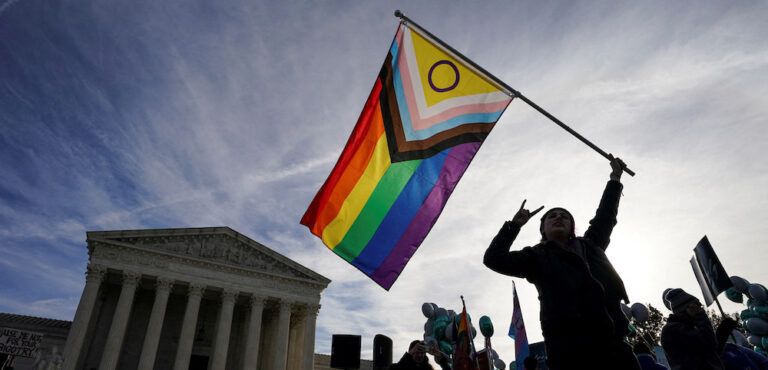
A Single Man: style and ethics
GUEST COLUMN
IAN BELL
Tom Ford, commentators say, has brought a slick men’s look, the tighter suit and the strong, sharp shoulder back to men’s fashion this season.
And the fashion sense he brought to his directorial debut in the film, A Single Man, is no less stylish.
Less remarked upon has been the way A Single Man and the 1964 novel by Christopher Isherwood on which it is based portrays characters bringing a certain redemptive quality to their interactions. Specifically, I argue, they affirm a sense of humanity through connection and friendship that remains noteworthy in the homosexual context.
In Isherwood’s novel (and the film), George, the narrator, is a middle-aged academic grappling with the shocking and sudden death of long-time partner, Jim, who dies in a car accident on an icy road visiting his family in America’s hinterland.
Isherwood uses the contrast between the snowy hinterland Jim must traverse to visit his family, and the mildness of the Los Angeles winter by the beach in Santa Monica where Jim lives with George, as a metaphor for the likely relation between the two places and parties in mid-20th century America.
‘Invisible’ is a recurring adjective in A Single Man. It describes a public refusal to recognise a homosexual minority in 1950s and early 1960s America. A refusal pierced only for occasional vilification of an ‘Other’ constructed in association with the then Communist enemy.
To the extent neighbours suspect same-sex desire in Isherwood’s Santa Monica, then there is an ironic condescension tinged with hostility.
Certainly, when Jim is killed, there is no possibility of George being invited to the funeral or indeed acknowledged formally in any way by the biological family.
Enter Kenny Potter, one of George’s admiring but also curious students. Kenny wants to track George down. He hangs out in George’s local, and, finally, runs into him late one evening. They reflect on life.
George is drunk in a good way, and one he seldom achieves. He tries to describe to himself what this kind of drunkenness is like — it’s a Dialogue. A dialogue between two people. Yes, but not a Platonic dialogue in the hair-splitting, word-twisting, one-up-to-me sense; not a mock-humble bitching-match; not a debate on some dreary set theme.
You can talk about anything and change the subject as often as you like. In fact, what really matters is not what you talk about but being together in this particular relationship.
George avows that he has got sillier as he has got older, so Kenny calls his bluff.
“Let’s go swimming,” says Kenny abruptly, as if bored by the whole conversation. “All right.” Kenny throws his head right back and laughs wildly. “Oh — that’s terrific!” “What’s terrific?” “It was a test. I thought you were bluffing, about being silly. So I said to myself, I’ll suggest doing something wild, and if he objects — if he even hesitates — then I’ll know it was all a bluff”.
And in the surf, drunk, George gets overwhelmed such that Kenny has to help him out. Later, at home, there is a clear sexual frisson that leads to an emotional intimacy with Kenny edged towards topics he wants, really, to talk about. And George, mentor-like, offers his spare room for Kenny to use at any time as a private space away from the public gaze.
The affirmation of humanity here comes through flirtation, conversation, sharing, kindness, generosity.
This theme is even stronger in the narrative reworked by Tom Ford for his film. There, Kenny’s curiosity about George sees him discern deep emotional pain and even signs of pre-planning for suicide. As in the novel, Kenny tracks George down at his local. And, then, back at George’s home after the swim, Kenny hides George’s gun from him. Later, awaken from his drunken stupor, George discovers this.
He is comforted by the evidence of Kenny’s wisdom and kindness and his reassuring, sleeping presence. Indeed, his humanity appears palpably reaffirmed, suggesting a refreshed capacity to move through his grief, and to face the future without Jim.
This theme of a realised, shared humanity in A Single Man is rarer than one might expect in contemporary novels or films in a homosexual setting. For example, in Annie Proulx’s, spare, 1990s short story Brokeback Mountain and the later 2005 film, the scope for a genuine meeting, for a shared humanity, is radically circumscribed by continuing heterosexual marriages, emotional incapacities, and imminent violence stemming from close family and local communities.
Consider another example: the time-honoured theme of ‘the homosexual’ as a predator on other men, and even a sadist, that reaches full-throttled expression in John Scott’s 2001 Australian novel The Architect. Here, Andrew Martin, a successful young Australian architect visiting Berlin, is seduced by Johannes Von Ruhland, a brillant, aging German architect.
With his brillance unexpressed in terms of buildings, his reputation sullied by association with the Nazi regime, and his professional influence marginal and indirect, Von Ruhland is a monstrosity of hurt perverted into radically destructive forms of human relationships whereby he feeds off, and destroys, his love object. Out of apparent resentment and envy, Von Ruhland sabotages Martin’s promising career and creates the conditions for his murder.
Australian writer Mary Zournazi has suggested that the notion of humanity as civility, kindness, compassion and a willingness to relieve the distress of others has deep, pre-modern roots in European societies.
A Single Man, in both the novel and the cinema version, revives this ethic and affirms the possibility of humanity in our many and varied connections with each other in the twenty-first century. This is no small achievement.
info: Ian Bell is a freelance writer and critic. A Single Man is available now on DVD.










It was dull, just my view, and not very moving at all, moved me to the cinema exit. Why do gay men take this movie and Brokeback Mountain and start swinging from the rafters with joy that we are seen as “normal”. The saving grace of this film was the suggestion that death reunites us all. That was the best part. Then again the thought of meeting the same bitchy queens ‘over there’ *shudders